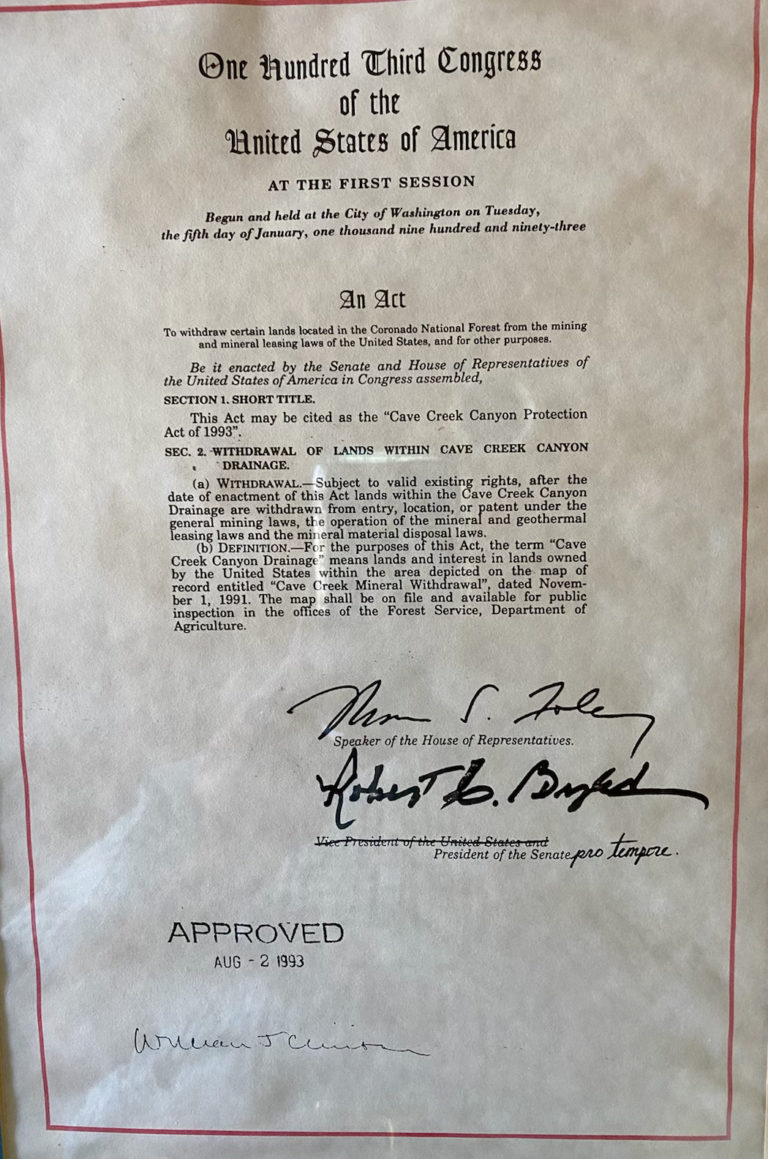2 – New National Recreation Areas (1992)
(This is a part of a series of gleanings from the history of CRC’s 30 years of work; additional posts available here.)
The mine fight lifted the lid on the boiling pot of regional dissatisfaction with the government’s land management policies. People here, from ranchers to scientists, wanted an organization that represented diverse interests, so we “could speak with a unified voice, as informed and interested members of the public, to the government planners regarding management decisions.” Thus, the Chiricahua Regional Council was born on March 23, 1992.
Our first Directors were Richard G. Zweifel (President); Karen Hayes; Bill McDonald; Edward Roos; and Noel Snyder. Mary Willy was CRC’s first Secretary–Treasurer.

(Photo by Narca Moore)
In 1992, as soon as CRC formally existed, we plunged immediately into a dogfight over Coronado National Forest’s desire to create new National Recreation Areas (NRAs), in three of Arizona’s Sky Islands. One NRA was envisioned for the Chiricahua Mountains. Here, the Forest Service plan began as the Cave Creek–Pinery Canyon Concept Plan, which proposed spending a great deal of money on recreational development––development that threatened the region’s biological diversity and rural cultural values.
CRC members attended all meetings, held in five towns from Douglas to Tucson. The Forest Service brushed off most questions about the project, saying that the concept plan was simply a step toward a planning document, which would allow for comments, questions––and (we were thinking) legal challenge. Public reaction was overwhelmingly negative.
By September 1992, Pinery Canyon and the western slope of the Chiricahuas had been dropped from the plan. Also in September, the Forest Service conceded that the NRA proposal was moribund but said that recreation development plans still existed.
The CRC recognized recreation as an appropriate use of public land but stressed that recreation needs to be tailored to the special values of a given region. The high biodiversity of the Chiricahua region has made it a center of field research and ecotourism, and, therefore, recreational plans need to be crafted to have the least possible impact on sensitive ecosystems.
CRC offered to cooperate with the Forest Service and legislators (in particular, Congressman Jim Kolbe) to develop plans that are sensitive to our special biological and cultural values.



